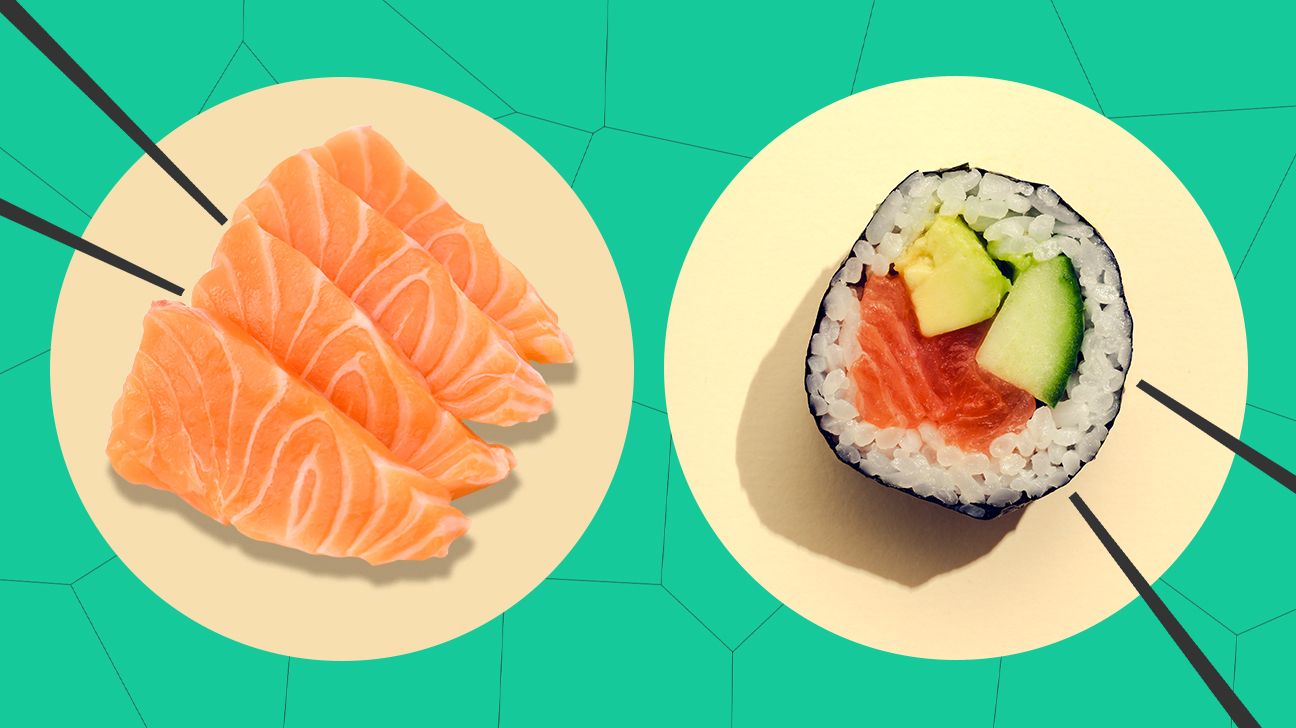We include products we think are useful for our readers. If you buy through links on this page, we may earn a small commission. Here’s our process.
Sushi involves raw fish, right? (It can, yes.) But sashimi is raw fish too—so what is the difference between sushi and sashimi? Mostly, it comes down to whether or not rice is involved, but there are other differences between these two superstars of Japanese cuisine.
Sashimi
If you prefer to go au natural, opt for fresh and tasty slivers of sashimi, which is commonly prepared using a variety of seafood, like yellowtail or bluefin tuna, mackerel, or hamachi, though various meats including beef, pork, chicken, and even horse are options if your stomach is up for the challenge.
Whether fish, fowl, or four-footed, the featured protein is sliced thin and served raw to stand as the main ingredient; accompaniments such as soy sauce and wasabi are used sparingly. A garnish of shredded daikon and shiso leaf might also make an appearance, but sashimi is undoubtedly a solo act.
Sushi
When it comes to sushi, things get a bit more complicated. Think of it as a Fleetwood Mac situation: The name “sushi” actually refers to rice despite the fact that most people associate the dish with its most notable partner, raw fish—the Buckingham/Nicks, if you will (which leaves soy sauce and wasabi as its Christine McVie, to round out the analogy).
The history of sushi dates back centuries and is rooted in necessity with fermented rice used as a means to preserve fish. Today, sushi is most often served in the style of maki (sushi rolls) and nigiri.
Nigiri begins with thoroughly washed white rice that is cooked and then delicately seasoned with vinegar (a nod to its fermented origins). Once cooled to room temperature, the rice, which should have a slightly sticky consistency, is formed into a palm-sized ball and often spiked with a dab of wasabi. Next comes the topping—primarily a slice of raw seafood, though cooked items such as eel, shrimp, and egg are also used, not to mention assorted vegetables and meats—again, it’s the rice that’s the constant. A gentle dip in soy sauce (protein-side down) provides the finishing touch.
Rivaling nigiri in popularity is maki which consists of fish and other assorted ingredients layered on top of sushi rice and then rolled inside a sheet of toasted seaweed.
Maki can either be served whole as a hand roll or cut into bite-sized pieces, usually accompanied with wasabi, soy sauce, and pickled ginger. Variations range from a classic tuna roll to more modern, American-born creations such as the crab, avocado, and cucumber-stuffed California roll—not to mention the mega-sized Frankenstein creations that are found at numerous stateside Japanese restaurants (and kazari maki, with designs embedded into the roll).
But not all.
As free-wheeling half-priced sushi joints continue to rise in popularity, so to do the strictly traditionalist, budget-busting temples of seasoned sushi masters who hand-polish each individual grain rice, source the finest ingredients from around the world, and absolutely, positively will not serve you a spicy tuna roll no matter how nicely you ask. That’s the beauty of sushi and sashimi: Whether you’re hungry for a cheap, mayo-laden gut bomb or a several hundred dollar omakase (chef’s choice) meal where each bite is pure, pristine perfection, your options are seemingly endless.

